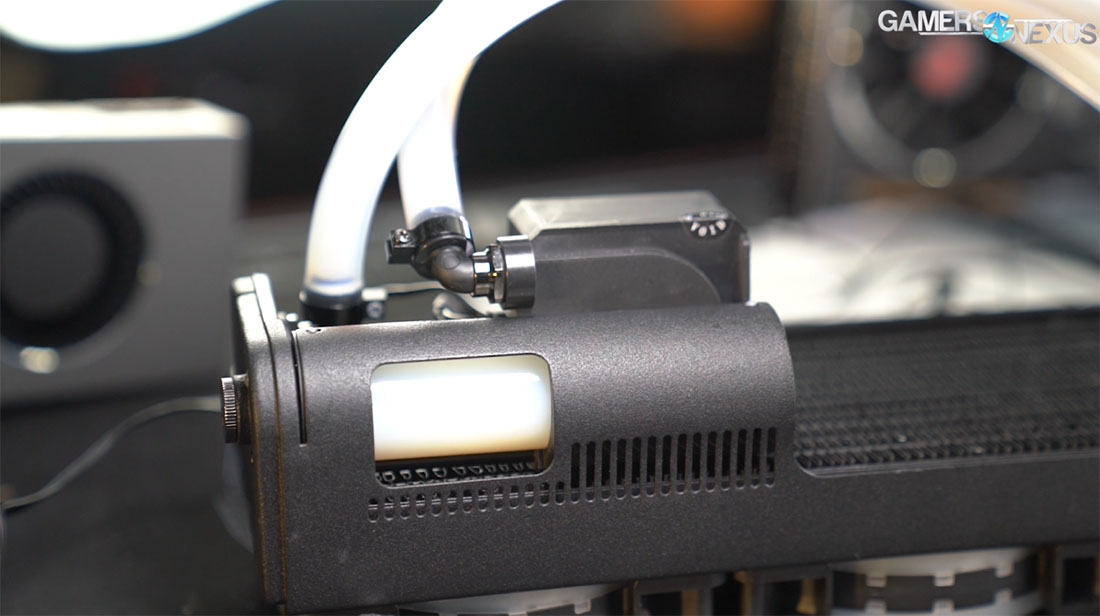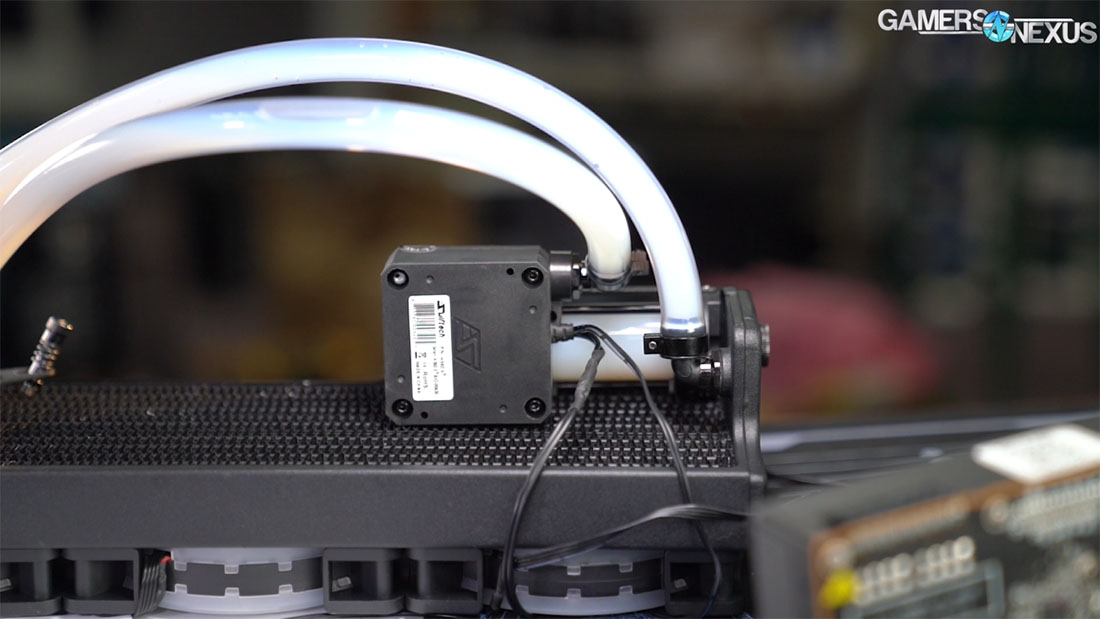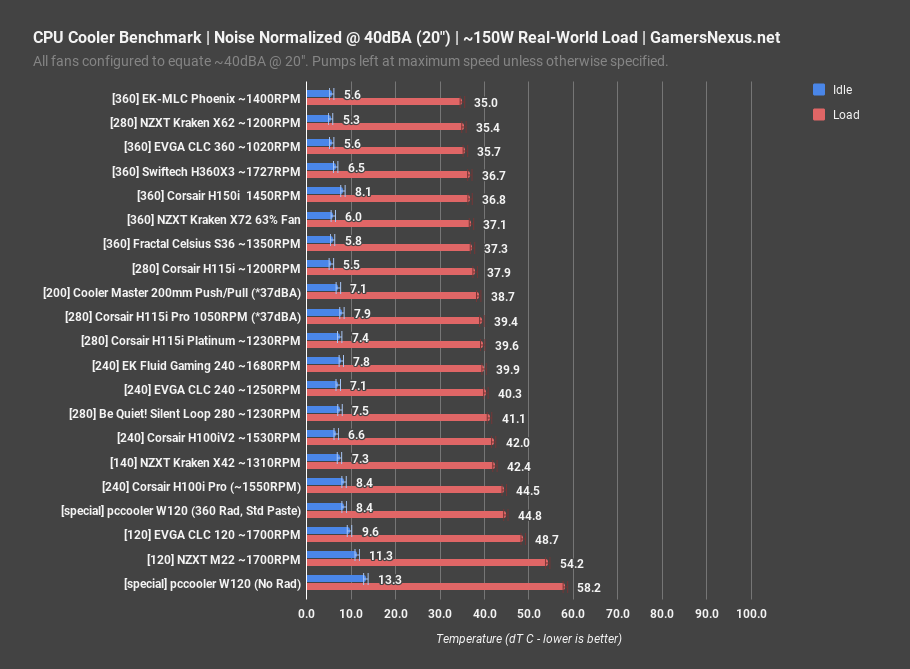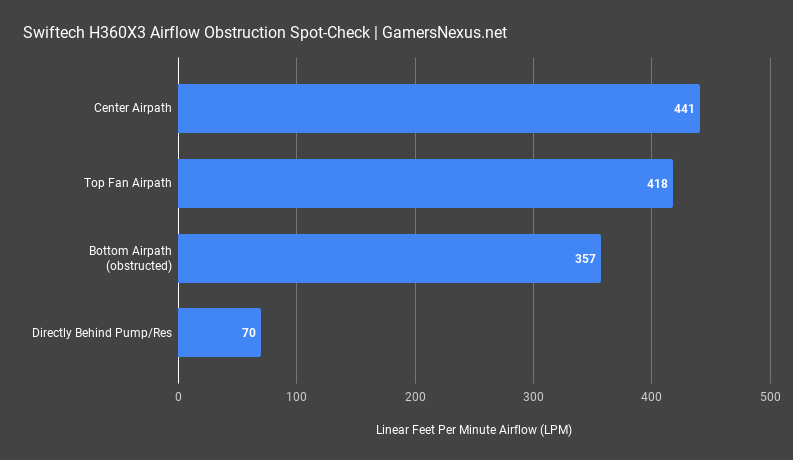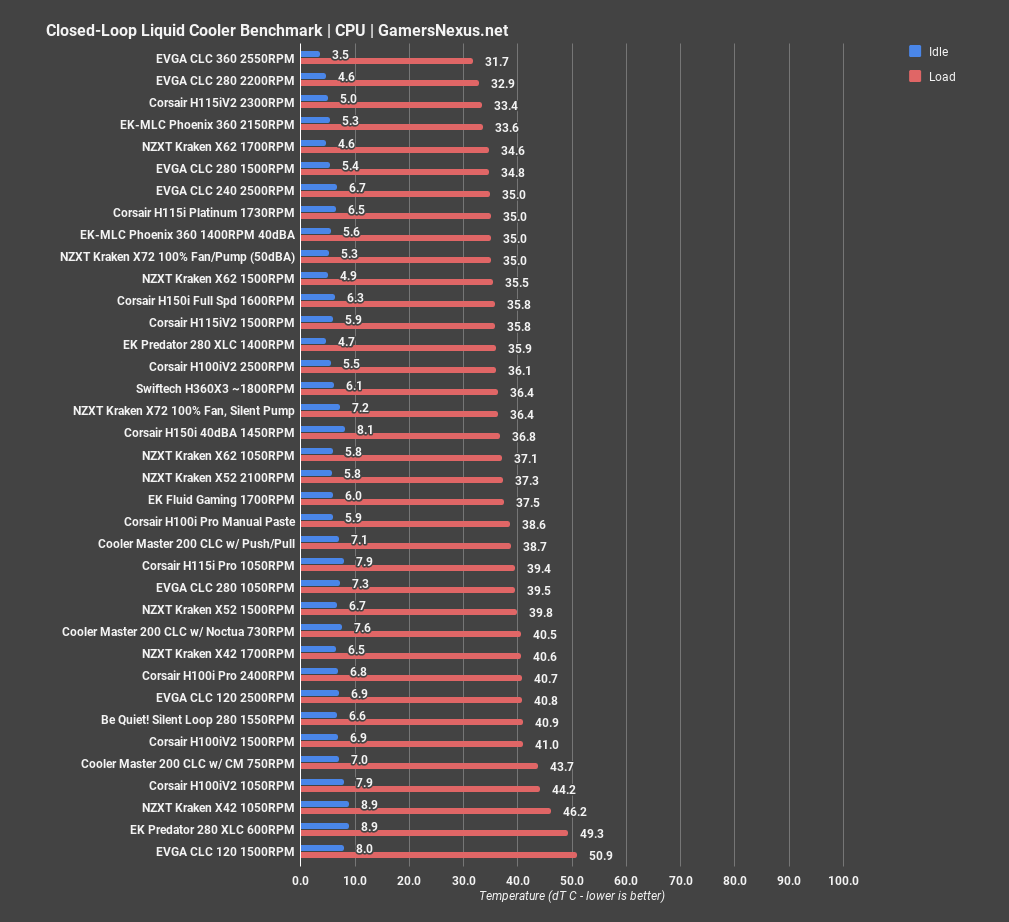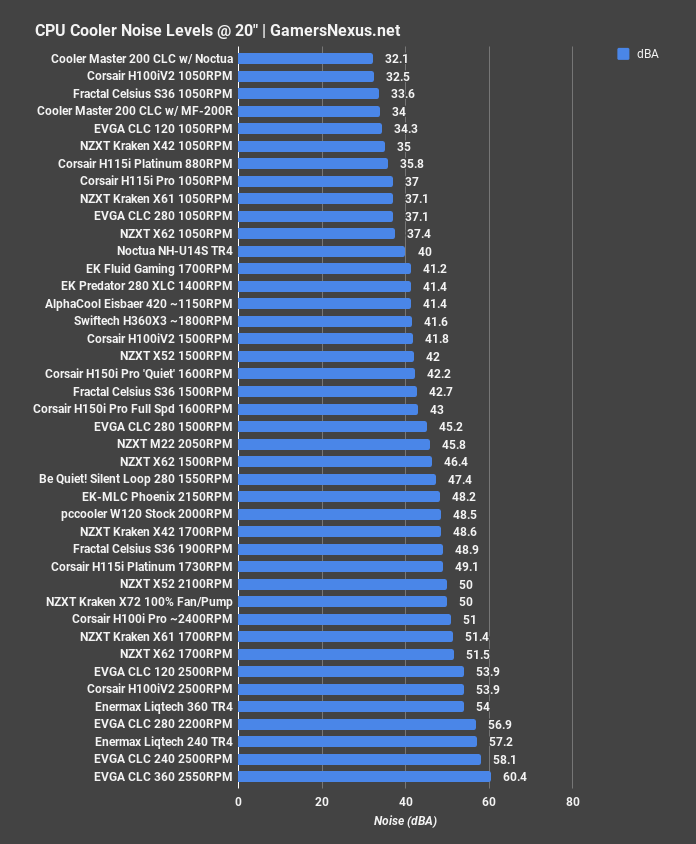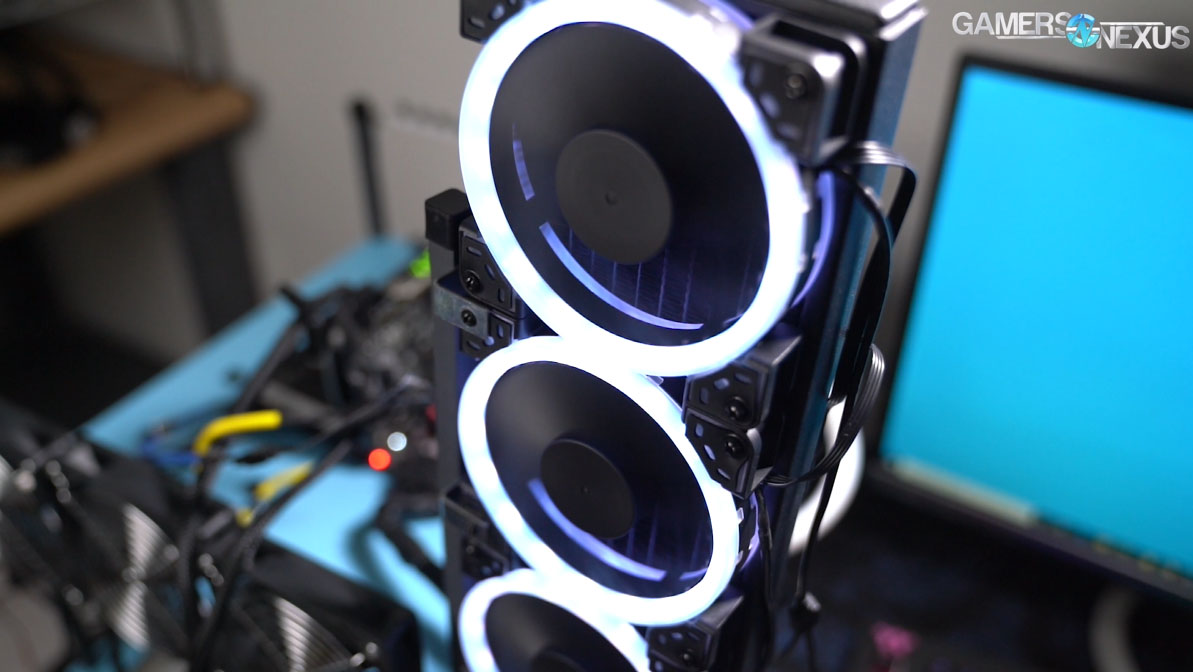Swiftech H360X3 Review & Benchmark: Actually Different Liquid Cooling vs. Asetek
Posted on
Most closed-loop liquid coolers are unexciting, but that’s not true for today’s Swiftech H360X3 that we’re reviewing. When the vast majority of CLCs on the market are made by Asetek or CoolIT, it immediately makes companies like Swiftech interesting for their clever solutions to bypass Asetek patents or attempt to improve upon long-standing cooling designs. Most companies buy their CLCs from Asetek and CoolIT, including every single CLC made by NZXT, EVGA, Thermaltake, and Corsair, but some make their own or find alternative suppliers. The Swiftech H360X3 is a semi-open loop that’s easily expandable for water cooling, but also includes clear tubing with dyes for more custom-tuning without venturing into full open loop territory. Today, we’re testing the H360X3 to see how it does versus plainer solutions.
For the basics, the Swiftech H360X3 AIO – or CLC, as we continue insisting – should be priced at around $165 for the 360 variant, or $140 for the H240X3. The series includes three dyes (red, green, blue) to accompany its pastel white coolant that’s pre-filled.
We should probably start by addressing one of the most obvious compromises of this design. Part of what makes the Swiftech H360X3 unique is that it functionally combines all the key components of an open loop – aside from the actual waterblock – all in one unit. The radiator, the pump, a miniature reservoir, and the tubing is all attached to the bottom of the radiator, creating an area of airflow impedance while solving other problems. This allows Swiftech to build a semi-expandable design while still checking the CLC boxes, and critically allows Swiftech to dodge Asetek’s patent that allows the company to blockade other manufacturers from building pump-in-block solutions. Since this is the most obvious place to put the pump, and because the patent has been successfully defended in court rulings, companies more wary of lawsuits and still desiring to sell in the US have had to resort to unique solutions. EK built its Phoenix line, which also attaches the pump to the radiator, but resultingly encounters fitment issues in cases. Top-mounting the Phoenix line isn’t as universally compatible as the average CoolIT or Asetek CLC, and price is also higher due to complexity of design and lower volume production. Deepcool’s Captain series also attempts to bypass this patent, but manages to keep the pump in the block area. As we showed in our factory tour of Deepcool, this solution uses a multi-chamber design so that, technically speaking, the pump isn’t actually attached to the block, but is rather mounted independently in a separate chamber adjacent to said block. It’s a clever bypass, but still has some trade-offs – mostly looks and additional hardware, extra tubing – but it also resolves radiator fitment concerns.
Swiftech’s design has a unique compromise that most other workarounds don’t face, and that’s the airflow impedance through the radiator caused by trying to leverage the additional area for more fan mounting. Swiftech allows for an extra fan to be mounted by orienting the pump-and-res vertically along the radiator, with some surface area lost to blockages.
The total radiator mounting area – not surface area on the whole, as that’d be calculated against the fins, but the exposed face on one axis – is approximately 114.3mm by 349.25mm long. For reference, the upper portion of the blockage – the section that sees the top half of the reservoir and the entire pump chamber – is about 66.7mm x 57.15mm. The lower blockage is about 31.75mm x 63.5mm. The total blockage area is about 14.5% obstruction to airflow. The upper portion is much more severe, as the pump disallows any airflow through the radiator. The lower portion is not flush with the radiator, and so air can still flow through. Swiftech will be at a disadvantage in a like-for-like scenario where no blockage is present, but it may be able to make-up for this deficit elsewhere, as we’ll see today.
Extras
Swiftech has also found other ways to heavily differentiate its CPU cooler, like the standardized clear, open loop tubing used for routing the radiator to the block. Swiftech pre-fills this with a Mayhems Pastel White coolant, a stark departure from the usually blacked-out tubing of CLCs, and further includes coolant dyes in red, green, and blue for loop color customization.
Our only problem with this is a concern of aging. Coolants with color tend to gunk-up with age, and after usage cycling our provided review unit, we eventually saw the coolant and distilled water separating within the loop. The coolant falls-out when the cooler is left unused periodically, although turning the loop back on gets it cycling again. We took photos of the separation of color to help demonstrate this. What we don’t know is the endurance of this coolant: Over time, in theory, the coolant will begin to gunk-up and lose some of that white coloration. It’s always easier to add than subtract, and so we’d prefer if Swiftech sold this unit stock with straight distilled water and a biocide, or maybe just propylene glycol, although propylene glycol tends to end-up non-clear, like green or pink. Distilled water and biocide would work and more-or-less guarantee perpetual life until some other failure. If the end-user wanted a colorful loop, they could then add dyes or purchase the Pastel coolant separately. That said, we still want to commend Swiftech for coming up with a unique point of differentiation, though we think it could maybe be executed in a way that reduces concern of gunking-up fluids.
Each fan is plain overall, but includes 18 LEDs in a ring encircling the fan hub. The LEDs are diffused through plastic, yet remain individually visible to an onlooker. This is a mark of simpler, lower cost RGB LEDs, and they don’t particularly hit the RGB LED mark with any finesse. Cooling will be tested in the next section. Each fan is also the beginning of the cable management nightmare that is the Swiftech 360mm cooler. For all its unique upsides, the cooler feels overall unrefined in the minor-yet-important quality-of-life features, like cable management and simplicity. Each fan has, obviously, a fan cable, but also a splitter cable that diverges into one male and one female LED header, used to daisy-chain fans together. With functionally three cables per fan, we’re up to 9 already (or 6 if counting the splitter as 1 cable), plus SATA power for the pump, a pump tachometer 4-pin header, an LED cable off of the block, and an optional fan-and-LED hub that requires one more SATA power and motherboard connection. The LED implementation simply isn’t worth having to deal with this many cables, and a modular solution or different solution altogether should be worked-out for future iterations.
One thing we do greatly appreciate about Swiftech’s approach is a heavier focus on customer service. Swiftech is a smaller company, and we can identify with the desire to let all customers know that they can always reach-out for help. The cooler includes a card with the support phone number and email plainly listed, making it easy for customers to get quick help. This is a step far beyond the bigger brands, who use ticketing systems and email threads to get slow answers to easy questions. We also liked the quality assurance checklist that Swiftech includes for customers: The QC list checks off for mounting hardware, radiator assembly and fasteners, a 15 PSI leak test for some reassurance, pump flow and circulation, radiator visual inspection, waterblock inspection, and overall package content. This is all done in the California office in the US and is marked by technicians
We’d like to see the manual instructions improved, though. Using words instead of just pictures would help significantly in clarifying some things, especially with how similar the cables can look to a less-trained user. Swiftech gets the highest marks from us on making it easy to reach customer service. That’s important and often lost by bigger companies that build around marking tickets resolved rather than ensuring customers are well accounted for.
CPU Cooler Test Methodology
CPU cooler testing is conducted using the bench defined below. We use a bench that is more carefully crafted for noise performance, opting for a passively cooled PSU and 23% RPM 980 Ti blower fan for very low system noise.
We strongly believe that our thermal testing methodology is among the best on this side of the tech-media industry. We've validated our testing methodology with thermal chambers and have proven near-perfect accuracy of results.
Conducting thermal tests requires careful measurement of temperatures in the surrounding environment. We control for ambient by constantly measuring temperatures with K-Type thermocouples and infrared readers. Two K-Type thermocouples are deployed around the test bench: One (T1) above the bench, out of airflow channels, and one (T2) approximately 2-3" in front of the cooler's intake fan. These two data points are averaged in a spreadsheet, creating a T3 value that is subtracted second-to-second from our AIDA64 logging of the CPU cores.
All six CPU cores are totaled and averaged second-to-second. The delta value is created by subtracting corresponding ambient readings (T3) from the average CPU core temperature. We then produce charts using a Delta T(emperature) over Ambient value. AIDA64 is used for logging thermals of silicon components, including the CPU and GPU diodes. We additionally log core utilization and frequencies to ensure all components are firing as expected. Voltage levels are measured in addition to fan speeds, frequencies, and thermals.
The cores are kept locked to 3.8GHz (x38 multiplier). VCore voltage is locked to 1.141v for the CPU. C-States are disabled, as is all other power saving. The frequency is locked without any interference from boost or throttle functions. This is to ensure that the CPU does not undergo any unexpected/uncontrollable power saving or boost states during testing, and ensures that the test platform remains identical from one device to the next.
Fan speeds are manually controlled unless otherwise defined. For liquid coolers, pumps are set to 100% speed unless otherwise defined.
No open bench fans are used for these CPU cooler tests. Only fans which are provided with the cooler are used.
| GN Test Bench 2015 | Name | Courtesy Of | Cost |
| Video Card | GTX 980 Ti Reference 23% RPM | NVIDIA | EOL |
| CPU | Intel i7-5930K CPU @ 3.8GHz | iBUYPOWER | $580 |
| Memory | Corsair Vengeance 32GB 2666MHz | Corsair | $175 |
| Motherboard | EVGA X99 Classified | GamersNexus | $365 |
| Power Supply | Enermax DigiFANLESS | Enermax | $250 |
| SSD | HyperX Savage SSD | Kingston Tech. | $130 |
| Case | Top Deck Tech Station | GamersNexus | $250 |
| CPU Cooler | This is what we're testing! | - | - |
We use a multi-diode thermocouple reader to log ambient actively. This ambient measurement is used to monitor fluctuations and is subtracted from absolute GPU diode readings to produce a delta value. For these tests, we configured the thermocouple reader's logging interval to 1s, matching the logging interval of GPU-Z and AIDA64. Data is calculated using a custom, in-house spreadsheet and software solution.
Our test starts with a 180s idle period to gauge non-gaming performance. A script automatically triggers the beginning of a CPU-intensive benchmark running Prime95 LFFTs. Because we use an in-house script, we are able to perfectly execute and align our tests between passes.
Swiftech H360X3 Benchmark: Noise-Normalized Thermals
Noise-normalized thermals are up first. As we’ve explained in the past, this allows us to better normalize for cooler positioning by eliminating the ability for chart-topping simply via highest noise levels. We normalize for 40dBA on these charts, but note that two coolers – the 200mm Cooler Master prototype and the Corsair H115i Pro – couldn’t reach 40dBA due to their quieter fans, and so these two sit disadvantaged from the others. That said, they’re also not really part of the core comparison. Separately, we’ve also now added the radiator size at the front of each listing, a response to a comment in our last review requesting the change. Thanks for the idea – we think it helps a lot with legibility. The Swiftech H360X3 ends up at 1727RPM on all 3 fans when configured to 40dBA, allowing the pump to run at full speed. The Swiftech H360X3 ranks at 36.7 degrees Celsius over ambient, which puts it roughly within error of the EVGA CLC 360 also at 40dBA. This performance delta can partly by explained by run-to-run variance, but more heavily can be explained by the largely blocked-off section of radiator that reduces flow for the third fan. We’ll look at linear feet per minute flow in a moment. EK’s somewhat similar MLC Phoenix 360 still manages top performance thanks to the limited airflow impedance and combination of pump and fans.
The Swiftech cooler ends up roughly equivalent with the Corsair H150i CLC, another 360mm solution, and the Kraken X72 at 40dBA, also a 360mm solution. For the most part, the 360mm coolers are all within error of each other: In this one cluster, we have the Swiftech H360X3, the Corsair H150i, the Kraken X72, the Celsius S36, and the EVGA CLC 360, all of which are 360mm coolers. For the most part, if disregarding peak fan RPM and normalizing for a more reasonable noise, you could just choose whichever has the better price or the better look for your build. The Swiftech H360X3 doesn’t do anything to amaze in this department, but also isn’t disappointing. It’s hard to improve thermal performance of liquid coolers, and so the bigger points of differentiation end up in the installation, style, cable management, price, and case compatibility.
LPM Measurement
Measuring with an anemometer is always extremely sensitive to exact placement and positioning, much like a dB meter is. This is just a quick spot-check. We position the anemometer along a vertical support to keep its horizontal distance from the cooler the same, about 1.25” back from the pump-res, then took spot measurements and averaged them for each location. We measured airflow in the center of the cooler as highest, averaging about 441 linear feet per minute through the radiator at the distance measured. This was at 100% speed. Biased toward the top of the cooler, opposite the pump-res mount, we measured about 418 LPM. Biased toward the bottom, directly behind the bottom fan and pump-res mount, we measured a sharp drop to about 357 LPM, or a reduction of about 14.6% -- conveniently about the same as our radiator area coverage by the pump-res combo. Measuring directly behind the reservoir, which isn’t flush with the cooler and allows some air to get around it, we spotted LPM at about 70, clearly obstructed.
Swiftech H360X3 Benchmark: Max Fan Speeds
If you’re the type who only cares about maximum fan speed, noise be damned, here’s the chart for that. The Swiftech H360 unit, totally maxed-out, only slightly climbs in RPM and ends up within error of its previous noise-normalized result. The result places Swiftech at around the H100iV2 with its fan speeds maxed-out, which manages a higher noise level than Swiftech, and similar to the X72 with 100% fan speeds and a silent pump.
Swiftech H360X3 Benchmark: Noise Levels
Looking at noise levels, maximum fan speed on the Swiftech cooler results in roughly a 41.6dBA reading in our standardized test bench. That’s why the cooler doesn’t chart-top for the max fan speeds listing – it’s just not focused on raw throughput, unlike EVGA’s CLC 360 and its 60.4dBA of jet engine intake when maxed. The H100iV2 at 2500RPM, referencing the previous comparison, ranks at 53.9dBA. Although the two were matched in flat-out fan speed testing, the H100iV2 ends up more than 2x louder in perceivable noise to the human ear – and again, we’re not talking acoustic power, but perceptible noise.
Conclusions
Our biggest concern with the H360X3 is whether it’ll gunk-up with age. We won’t know until it’s been around for longer than the average review cycle, unfortunately, so it’s tough to say if (or how quickly) this will gunk-up. Most colorful coolants do inevitably fill the blocks with fall-out from the coloration, so we’d like to see Swiftech perhaps move toward a simple distilled water baseline, with the users given the option of adding their own color later.
As far as performance, it’s about equal with the other 360mm closed-loop liquid coolers when noise-normalized. The fans aren’t particularly impressive, but aren’t bad. We think that Swiftech could improve on the fan/RGB implementation, as the current one becomes overwhelming for cable management.
Thermally, the cooler is fine. Swiftech gets huge points for its consumer-focused support policies, something that larger competitors have lost to the annuls of time. The bigger cooler manufacturers are more focused on getting customers in-and-out of the ticketing system, not actually fixing the problems, and that’s something we often see resolved with the smaller companies who still have owners close to the customer. There aren’t as many layers of separation between the top of Swiftech and the customer. We don’t see any particularly compelling argument from purely a thermal standpoint to buy the H360X3, but the customer support angle is valuable. It’s also expandable into what can become “baby’s first open loop,” if desirable, so that’s also valuable.
Editorial, Testing: Steve Burke
Additional Testing: Jake Henderson
Video: Andrew Coleman, Josh Svoboda
